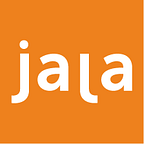Inspiring solidarity through many tongues: Remembering International Mother Language Day
All of us speak at least one mother tongue — a language spoken since early childhood, while growing up.
But how many of us are willing to give our lives for the right to speak it?
In Bangladesh, 21 February is Language Movement Day (also called Language Martyrs’ Day). On this day, Bangladesh, formerly a part of Pakistan, commemorates the protests in 1952 against the Pakistani leadership’s reiteration that only Urdu would be the official language of Pakistan. The activists killed in these protests are honoured as martyrs by the Shaheed Minar in Dhaka.
These protests were a climactic point in a movement that gained momentum in 1947 when a national education summit in Karachi advocated Urdu and English as the sole state languages. Some opponents to this feared that Bengalis would eventually be excluded from government activities, others also considered it part of an agenda of “cultural and ethnic assimilation”.
The language movement that strove to protect the official status of Bengali is credited as a catalyst for Bangladesh’s eventual independence from Pakistan. Thus, there is irony in one of the reactions against establishing Bengali as a state language was that it was an effort to divide the Pakistani people.
Fast forward to 2000, and the world commemorated the first International Mother Language Day on the same date, an initiative of Bangladesh. According to the United Nations website, besides cultural preservation and educational advantages, spreading mother tongues also inspires solidarity.
This idea stood out for me as it seems that governments often take the opposite approach: encouraging — or imposing — the use of particular languages or variants: Putonghua in Mainland China, Mandarin (over the various Chinese dialects) in Singapore, Bahasa Indonesia in Indonesia, Filipino in the Philippines (based on Tagalog) and, Urdu in mid-20th Century Pakistan. Understanding, tolerance and dialogue (or even just day-to-day business) between different groups can arguably be made easier with a common language to unite them.
All on the same page, so to speak.
How can solidarity come about through diversity rather than homogeneity?
An anecdote by the anthropologist David Graeber comes to mind. He tells of an official in rural Madagascar who announced that the office had closed early, repeatedly in French even when Graeber “pretended confusion and claimed, in [the local language] Malagasy, not to understand French”.
French was, Graeber explains, a language of command, “characteristic of contexts where explanations, deliberation, and ultimately, consent, was not really required, since they were in the final analysis premised on the threat of violence.”
This anecdote reminds us that language used in the public sphere is often related to power: it is state power that determines and enforces which languages are used for law, business, administration and education, and, ideally, all citizens who use those official languages have equal access to understanding and being understood by the state.
On the other hand, people who do not have access to those languages have only restricted participation — or are perhaps excluded entirely from it. The choice of language inevitably reflects the power dynamics between the state and its citizens who speak — or do not speak — it.
Moreover, there tends to be a power asymmetry where the less powerful have to make an extra effort to understand those in power, while those in power have less need to do so. In Graber’s example, the official could ignore whether his listeners really understand French, since, whether they understood or agreed with him, his command had to be obeyed. This extra effort is termed “interpretive labour” and encompasses the various ways the marginalised have to understand those in power, and change their behaviour in order to suit them. Failure to do so leaves one left by the wayside, or worse.
As another example, we can also think of the older generation of dialect-speaking Chinese Singaporeans who lost out economically and culturally in the country’s switch to Mandarin. One commonly hears how they have become estranged, today, from their Mandarin-speaking grandchildren. To be sure, there are many good reasons for the move, but dialect speakers are the community that have shouldered the burdens. Conversely, it is only recent that there have been initiatives to revitalise dialects in Singapore, and these are often grassroots-led efforts.
To return to the idea of solidarity: perhaps promoting linguistic diversity not only signals a community’s right to speak. It also affirms our commitment to sharing the burden of understanding and being understood by one another.
Having this common experience is one way to build solidarity between people of different communities, and also between governments and their people.
Of course, signals and affirmations are, at best, only promises — whether they are fulfilled is another matter. But promises are one way to begin.
Written by Thow Xin Wei
